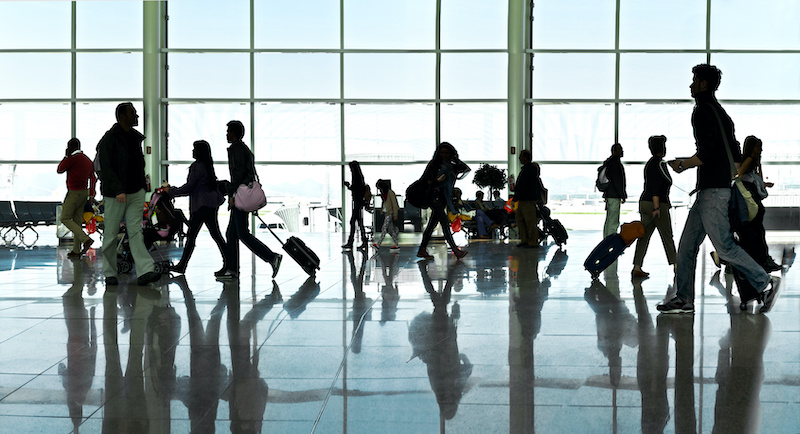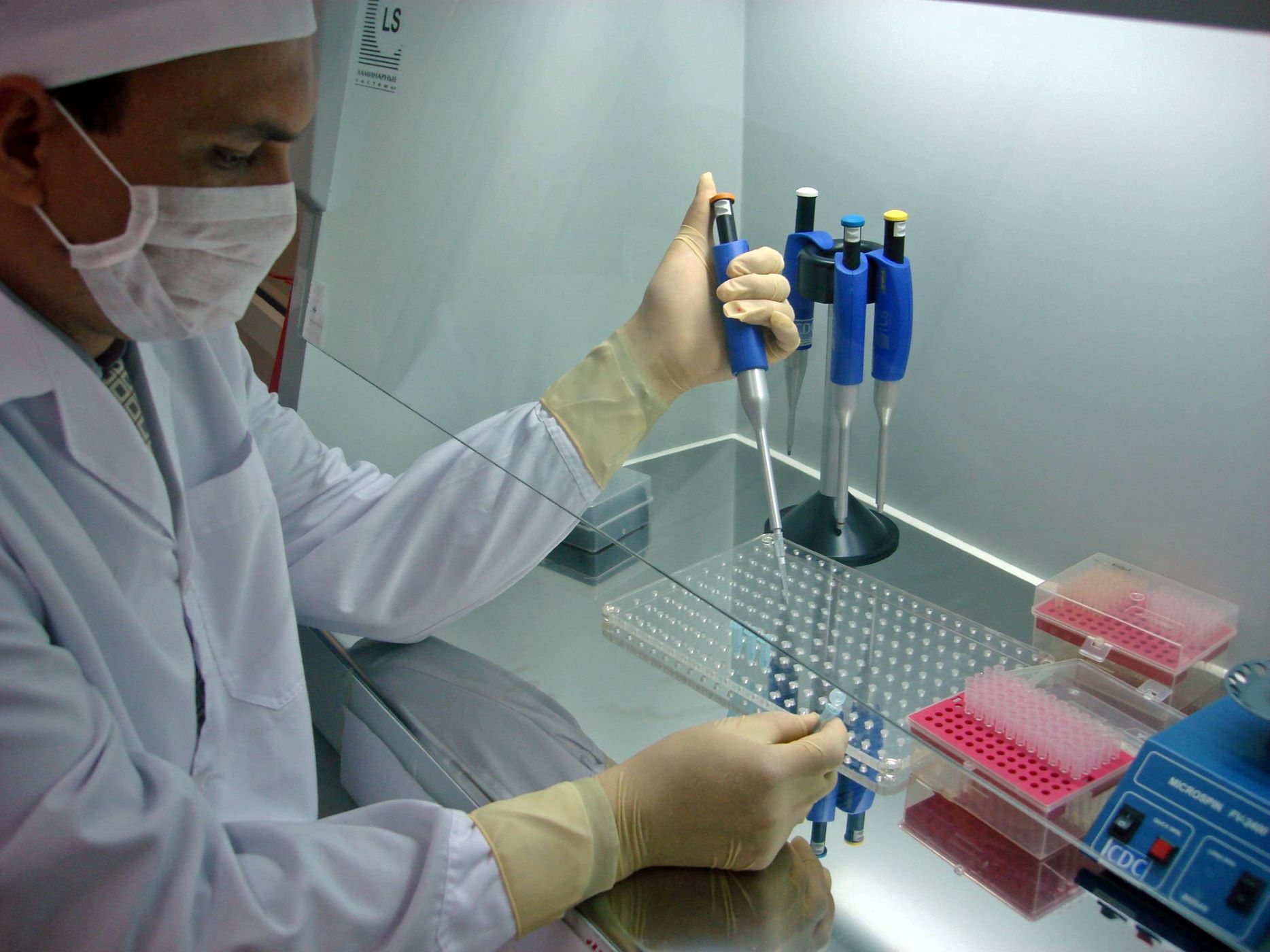Recommended

Blog Post
The last week has demonstrated the level of security theatre that has often been involved with travel bans put in place to reduce the spread of COVID-19. But heavy travel restrictions have played a role in the strategies of some of the countries that have most successfully battled the pandemic. As part of an effort to strengthen the International Health Regulations, the World Health Organization (WHO) should propose approaches that will limit travel restrictions to where they are most likely to be effective and design them to be minimally disruptive.
South Africa first reported a new variant of COVID-19 to the WHO on the 24th of November. In the following days the US—along with a lot of other countries—put in place partial travel bans on South Africa and its neighbors. As well as being limited to a few countries, the US ban exempted American citizens and didn’t come into effect until the 29th, three days after it was announced. As it turned out, the Omicron variant was present in Europe (at least) well before South African doctors reported it and 25 countries had reported cases by December 2nd, only three of which were in sub-Saharan Africa. Even the comparatively lackluster sequencing infrastructure in the US had picked up cases in six states by December 3rd. The late, regionally specific US ban that exempted a considerable proportion of those likely to be affected unsurprisingly didn’t work, but it still remained in place.
It is this kind of experience that has made the WHO so wary of travel bans as a tool to control pandemics. Usually, at best, they provide a few days of additional time to prepare. All too often they have no impact on the spread of infections at all, and yet remain in place far after they have demonstrated their lack of utility—especially if they target poorer countries. The costs for banned countries—in terms of lost access to markets as well as lost access to loved ones—can be considerable. And the message they sent in the case of South Africa and Omicron was particularly stark: don’t sequence COVID-19 and if you do, don’t share the knowledge that you develop. GISAID, a viral data-sharing collaborative, lists 129 countries and territories out of 241 tracked that hadn’t submitted a single COVID-19 sequence in the ten days prior to December 6th; perhaps they are the smart ones.
That said, the COVID-19 pandemic has demonstrated that travel restrictions including bans and quarantines can still be a part of a successful infection-fighting strategy. Vietnam, Taiwan, and New Zealand all used early bans and long-lasting universal quarantine requirements for international travelers alongside strong and early domestic control of spread to keep COVID-19 almost completely at bay for an extended period. At the start of June 2021. the three countries together had suffered only 197 reported COVID-19 deaths. Sadly, since then, Vietnam has seen a significant increase in cases and deaths, but for New Zealand and Taiwan the travel restrictions were part of a strategy that sustained a low mortality rate until most of the population had been vaccinated. Internal travel restrictions also appear to have reduced spread within China. In turn, that suggests the need for a rethink of the guidance on travel—and perhaps around the rules in the International Health Regulations (IHRs), the (supposedly) legally binding international agreement on infectious disease response overseen by the WHO.
On December 1st, the members of the WHO agreed to revisit the IHRs, including those related to rules governing the declaration of a pandemic. And WHO guidance issued a year ago already suggested a shift toward more nuanced guidance on travel restrictions. The guidance suggested that countries “with no (active) cases, imported/sporadic cases, a small number of clusters of cases, or that have controlled transmission and are striving to maintain this status, or those lacking adequate capacities to cope with an increased burden, may decide to implement restricted movement and quarantine measures for travelers arriving from countries with higher incidence.” But the WHO should think through more specific rules and guidance that support the central aim of the IHRs to minimize pandemic risk while also minimizing unnecessary restrictions on movement and exchange.
In the first place, that should involve research and consensus building around how, when, and if different types and levels of travel restrictions including bans, quarantine, and testing requirements are effective under different circumstances. But two proposals for measures the IHR negotiators might want to consider are a default “most favored nation” structure of travel restrictions alongside offramp requirements for those restrictions.
Most favored nation status would mimic the World Trade Organization principle that all members should receive the same trading privileges from other members. In practice this would be a requirement that member states should not impose pandemic-related travel restrictions based on country of origin or citizenship status unless the World Health Organization declares such restrictions valid for a particular set of origin countries.
This rule would raise the costs of “security theatre” travel restrictions while increasing the likely impact of those which remain. Rather than the US being able to impose bans based on the threat of the Omicron variant which only includes a small set of Southern African countries and excludes its own citizens, for example, it would have to put in place a universal travel ban—something that might have given it pause, or at least led to a more rapid reversal when it became so quickly apparent the ban was too late. But universal restrictions are also what helped New Zealand, Taiwan, and Vietnam stay largely COVID-free for so long: in a globally connected world, especially with a highly infectious and (often) difficult to detect virus, universal restrictions are often going to be the only type that have an impact.
As with most favored nation status in trade, exceptions could be made for regional free movement blocks like the European Union, and there should be a process for the WHO to rapidly evaluate the potential appropriateness of country- or region-based restrictions for outbreaks of concern that look very different from COVID-19. Perhaps member countries might also explore the (many) health, human rights, and practical issues around a process for the WHO to request that countries facing an outbreak impose specific restrictions or requirements on exit as a tool to control pandemic spread.
The revised regulations could also specify offramp requirements: mandating that travel restrictions carried a sunset clause defining the maximum length for which they would operate without specific renewal as well as phase-out obligations based on changing pandemic epidemiology (for instance, a travel ban will automatically expire if case rates in the country imposing the ban reach a certain threshold). Restriction implementation should also specify a process to move toward less disruptive approaches, for example laying out plans and timing for a mandatory quarantine system to replace outright bans and then a testing system to replace that. And the WHO should have the capacity to rapidly provide model language on offramp requirements specific to particular outbreaks.
It is good news that the world has agreed to work on an instrument beyond the IHRs to govern future pandemic response, covering issues including equitable distribution of diagnostic tests, drugs, and vaccines. Between the IHR and the new instrument there are numerous other ways the international coordinated response to pandemic threats could improve, including new financing mechanisms, language around protecting the trade in supplies necessary for pandemic response, agreements on antibiotic use and the monitoring of zoonotic risks, transparency, enhanced oversight mechanisms, and an enhanced role for civil society. And the fact that the IHRs have been routinely ignored in the global response to COVID-19, with many countries failing even in basic reporting duties, also suggests the need to think about mechanisms to incentivize compliance.
But revisiting the regulations and institutions around travel restrictions should certainly be high on the list of discussion points. The World Health Organization’s traditional distrust of travel bans is justified by far too many cases of discrimination and security theatre that have cost lives and livelihoods rather than saved them. And yet COVID-19 has also demonstrated that restrictions still, sometimes, have a role. Thinking (and researching) through what that role is, and trying to limit their use to when they are truly effective, should be a vital part of the work of preparing for the next pandemic.
Disclaimer
CGD blog posts reflect the views of the authors, drawing on prior research and experience in their areas of expertise. CGD is a nonpartisan, independent organization and does not take institutional positions.





